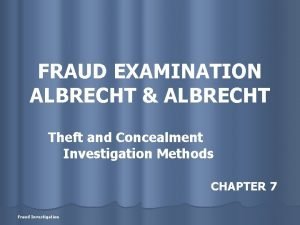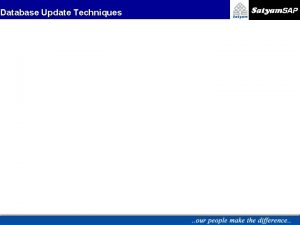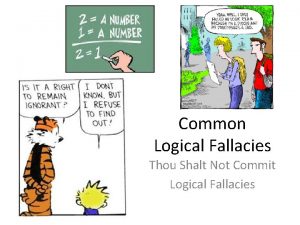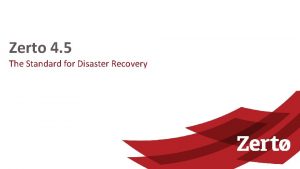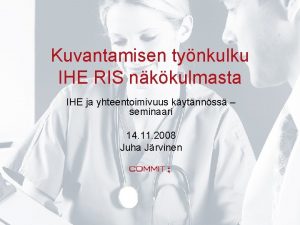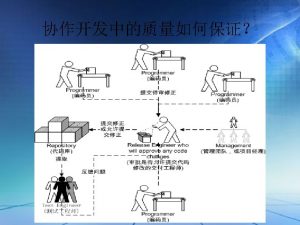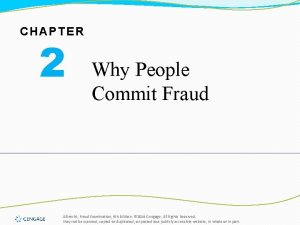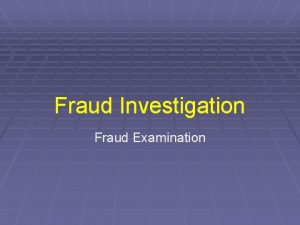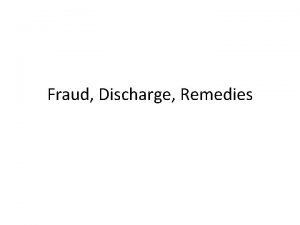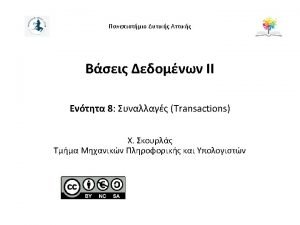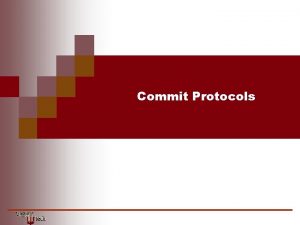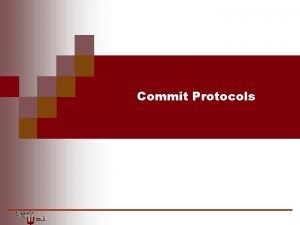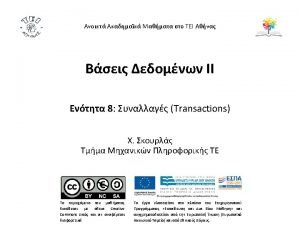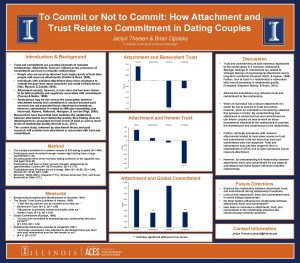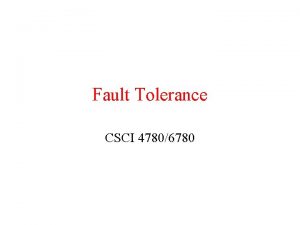Fraud Examination Chapter 2 Why People Commit Fraud











- Slides: 11

Fraud Examination Chapter 2 Why People Commit Fraud Albrecht, Zimbelman © 2011 Cengage Learning. All Rights Reserved. May not be copied, scanned, or duplicated, in whole or in part, except for use as permitted in a license

To the Student q This chapter covers some of the basic principles of fraud. It begins with a description of the types of people who perpetrate fraud. q We then discuss why people commit fraud, including the fraud triangle. Finally, we examine how honest individuals are recruited to participate in fraud schemes. q By understanding these basic principles, you will see fraud perpetrators in a different light and begin to understand how a trusted friend or colleague could, unfortunately, become involved in fraud. Albrecht, Zimbelman © 2011 Cengage Learning. All Rights Reserved. May not be copied, scanned, or duplicated, in whole or in part, except for use as permitted in a license

Learning Objectives q Know the types of people that commit fraud. q Explain why people commit fraud. q Describe the fraud triangle. q Explain the fraud scale. q Understand how pressure contributes to fraud. q Understand why people rationalize. q Understand how people are recruited to participate in fraud schemes. Albrecht, Zimbelman © 2011 Cengage Learning. All Rights Reserved. May not be copied, scanned, or duplicated, in whole or in part, except for use as permitted in a license

Type of People That Commit Fraud Who commits fraud? § Anyone! § Not demographically or psychologically differentiated § Have the profile of other honest people Albrecht, Zimbelman © 2011 Cengage Learning. All Rights Reserved. May not be copied, scanned, or duplicated, in whole or in part, except for use as permitted in a license

The Fraud Triangle Albrecht, Zimbelman © 2011 Cengage Learning. All Rights Reserved. May not be copied, scanned, or duplicated, in whole or in part, except for use as permitted in a license

The Element of Pressure Divided into four main groups: 1. Financial pressures 2. Vices 3. Work-related pressures 4. Other pressures Financial pressure is the most common type of pressure to commit fraud. Albrecht, Zimbelman © 2011 Cengage Learning. All Rights Reserved. May not be copied, scanned, or duplicated, in whole or in part, except for use as permitted in a license

The Element of Pressure Financial Pressures Common Financial Pressures: 1. Greed 2. Living beyond one’s means 3. High bills or personal debt 4. Poor credit 5. Personal financial losses 6. Unexpected financial needs Albrecht, Zimbelman © 2011 Cengage Learning. All Rights Reserved. May not be copied, scanned, or duplicated, in whole or in part, except for use as permitted in a license

The Element of Pressure Vice Pressures 1. Gambling 2. Drugs 3. Alcohol 4. Expensive extramarital relationships Albrecht, Zimbelman © 2011 Cengage Learning. All Rights Reserved. May not be copied, scanned, or duplicated, in whole or in part, except for use as permitted in a license

The Element of Pressure Work-related Pressures “Get even with the employer” Motivated by these factors: § § § Getting little recognition Feeling job dissatisfaction Fear of losing one’s job Being overlooked for a promotion Feeling underpaid Albrecht, Zimbelman © 2011 Cengage Learning. All Rights Reserved. May not be copied, scanned, or duplicated, in whole or in part, except for use as permitted in a license

The Element of Opportunity q Six major factors that increase opportunity: § Lack of controls § Inability to judge performance quality § Fail to discipline fraudsters § Lack of access to information § Ignorance, apathy and incapacity § Lack of audit trail Albrecht, Zimbelman © 2011 Cengage Learning. All Rights Reserved. May not be copied, scanned, or duplicated, in whole or in part, except for use as permitted in a license

Fraud Recruitment Albrecht, Zimbelman © 2011 Cengage Learning. All Rights Reserved. May not be copied, scanned, or duplicated, in whole or in part, except for use as permitted in a license
 How do fraud symptoms help in detecting fraud
How do fraud symptoms help in detecting fraud Fraud examination albrecht
Fraud examination albrecht Pictures
Pictures Busceral
Busceral Atomic commit protocol in distributed system
Atomic commit protocol in distributed system Database commit is triggered by
Database commit is triggered by Thou shalt not commit logical fallacies
Thou shalt not commit logical fallacies Zerto offsite clone
Zerto offsite clone The black cat litcharts
The black cat litcharts Commit ris
Commit ris The moving power which impels one to commit an act
The moving power which impels one to commit an act Git commit
Git commit

